Rotala wallichii
Scientific name: Rotala wallichii
Family: Lythraceae
Maximum size reached under cultivation: 10 - 30 cm (3.94 - 11.81 inch)
014
Recommended pH range: 6 - 6.9
Recommended water hardness: 4 - 12°dGH (71.43 - 214.29ppm)
0°C 32°F30°C 86°F
Recommended temperature range: 22 - 27 °C (71.6 - 80.6°F)
Preferred propagation method: Cuttings
Native to: East Asia
Growth rate: Fast
Recommended substrate: Fine gravel
Lighting requirements: Bright
Ideal placement in tank: Midground
Common Names
Whorly Rotala, Rotala Wallichii
Origin
Rotala wallichii is native to Southeast Asia, where it thrives in slow-moving rivers, streams, and ponds. It belongs to the Lythraceae family and is known for its fine, feathery leaves that create a striking appearance in aquascapes.
Growth Rate
Rotala wallichii is a fast-growing plant, especially under optimal conditions. With the right lighting, CO2 supplementation, and nutrient-rich water, it can quickly fill out the midground and background areas of an aquarium, adding a lush, vibrant display.
Usual Maximum Size
In aquarium settings, Rotala wallichii can grow to a height of 10 to 30 cm (3.94 - 11.81 inches), depending on the conditions. Regular trimming helps maintain its compact growth and encourages a bushy appearance.
Planting Area
Rotala wallichii is best suited for the midground to background areas of the aquarium. Its delicate, feathery stems and bright coloration make it an eye-catching addition that contrasts well with green plants. When planted in groups, it creates a dense, colorful thicket that enhances the visual depth of the tank.
Lighting Requirements
This plant requires bright lighting to thrive and maintain its vibrant colors. High-intensity LED or fluorescent lights are ideal for Rotala wallichii. Inadequate lighting can cause the plant to become leggy and lose its reddish-pink coloration, turning green and appearing less vibrant.
Water Parameters
pH: Rotala wallichii prefers slightly acidic water, with a recommended pH range of 6 to 6.9.
Water Hardness: It thrives in soft to moderately hard water, with a recommended hardness range of 4 - 12°N (71.43 - 214.29 ppm).
Temperature: Ideal water temperature for this plant is between 22 - 27°C (71.6 - 80.6°F).
Substrate
A fine gravel substrate is ideal for Rotala wallichii, as its delicate roots can easily penetrate and anchor themselves. Adding nutrient-rich substrate or root tabs can support its rapid growth and overall health.
Propagation
Rotala wallichii propagates through cuttings. To propagate, take cuttings from the side shoots of the mother plant. Remove the bottom two pairs of leaves from the cutting to expose a length of bare stem. Carefully insert this stem into the substrate, taking care not to crush it. Within a few weeks, the cutting will develop a root system, establishing itself as a new plant. Regular trimming and propagation help maintain its bushy and compact form.
Difficulty
Rotala wallichii is considered a difficult plant to care for, making it more suitable for experienced aquarists. It demands high light, CO2 supplementation, and consistent water parameters to flourish. Any fluctuation in conditions, such as low light or insufficient nutrients, can quickly affect its health.
CO2 and Nutrient Requirements
To keep Rotala wallichii in optimal condition, CO2 injection is highly recommended. This plant thrives with a steady supply of CO2, which boosts its growth rate and enhances its coloration. Additionally, maintaining nitrate levels around 25 ppm is crucial, as nitrate deficiency can cause the plant to suffer. Regular dosing of liquid fertilizers containing macronutrients (nitrogen, phosphorus, and potassium) and micronutrients (iron and other trace elements) supports its lush growth and vibrant colors.
Short Description
Rotala wallichii is one of the most popular red-stemmed plants in the aquarium hobby, valued for its delicate, feathery leaves and striking colors. In the wild, it produces long flower stems with purple flowers, though flowering is rare when submerged in an aquarium. It requires bright lighting and a nutrient-rich environment, including CO2 supplementation, to thrive. Despite its demanding care requirements, its stunning appearance makes it a favorite among aquascapers.
Interesting Fact
The coloration of Rotala wallichii varies depending on the lighting and nutrient availability. Under high light and nutrient-rich conditions, the tips of the plant turn a vibrant reddish-pink, enhancing the visual appeal of aquascapes.
Potential Issues
Rotala wallichii is sensitive to changes in water conditions. If not provided with adequate light, CO2, and nutrients, it may lose its color, drop leaves, or become stunted. Additionally, low nitrate levels can cause the plant to deteriorate. Regular monitoring and maintenance are key to keeping this plant healthy and vibrant.

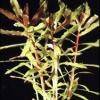 Ammania gracilis
Ammania gracilis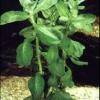 Ammania senegalensis
Ammania senegalensis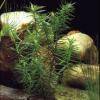 Didiplis diandra
Didiplis diandra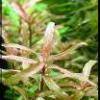 Nesaea crassicaulis
Nesaea crassicaulis Rotala indica
Rotala indica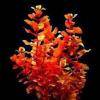 Rotala macrandra
Rotala macrandra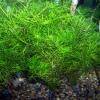 Rotala nanjenshan
Rotala nanjenshan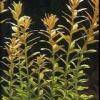 Rotala rotundifolia
Rotala rotundifolia